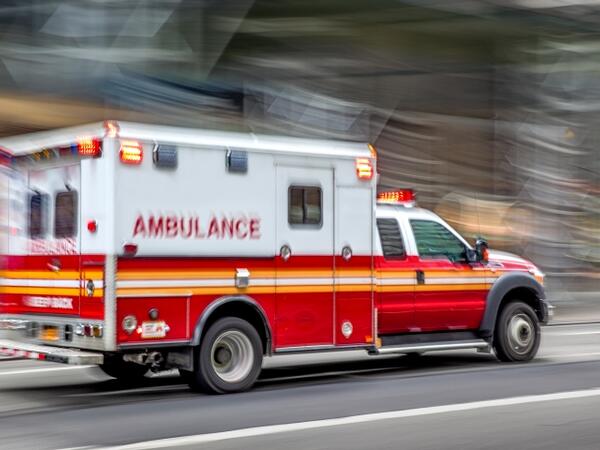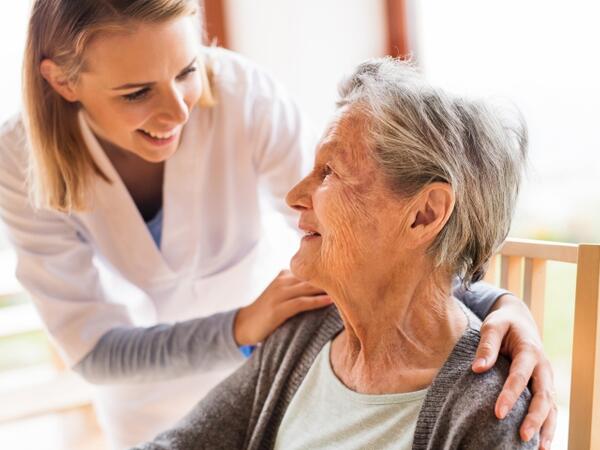
Senior Fall Prevention: Christian Care Fellowship Square
The Arizona State University Smart City Cloud Innovation Center Powered by AWS (ASU CIC) recently collaborated with the Christian Care Fellowship Square Mesa community in Arizona to apply Amazon’s Working Backwards Innovation process to reduce the number of seniors who fall.
Problem
Today falls are the number one cause of death for people over 65 in the United States. Each year there are 29 million falls. 7 million of which require treatment, including 3 million trips to emergency rooms. The US in on track for 7 fall deaths per hour and 60,000 fall-related deaths in 2030. The National Council on Aging has found that at least 1 in 4 seniors fall at least once a year, and falling once is likely to lead to another fall. Senior falls cost over $50 billion in health care costs – 75% of which is borne by Medicaid and Medicare. 20% of falls occur at night in residence between 9 pm and 7 am when seniors get up to go to the bathroom, answer the door, turn off the TV, and other activities. Reducing even a small number of falls will have a major impact on the quality of life for seniors.
Approach
Christian Care is a large provider of assisted living and care for seniors. The Fellowship Square Mesa community has embraced smart technologies to increase independence, confidence, and dignity for their residents. To reduce falls, Fellowship Square assembled a team of geriatric researchers, medical practitioners, government officials and academics to share their insights and experiences to fully understand the problem of falls and the particular needs of the senior community.
Using the Working Backwards process, the group envisioned a configurable sensor network that can identify when someone is getting out of bed or turning on lights and providing guidance and orientation to reduce falls.
The group shared in-depth knowledge of the senior community and determined that wearables – devices that are worn or embedded in clothing are not favorable and seen as institutional. As such they are often not used, especially at night. An Alexa powered assistant was identified as a device with a high level of deployment and adoption in Fellowships Square. Alexa’s are used to access information and control devices like lights.
The Fellowship Square solution will include a motion sensor, an Alexa, and a smart lighting system to turn on lights when someone gets out of bed. Some seniors with declining bladder control may wake and get of bed with a sense of urgency to get to the bathroom. The Alexa voice assistant will engage with the resident and ask them to wait and get oriented before standing up. The solution integrates Alexa routines as well to automatically generate a text message to notify a family member or caregiver of activity that could increase fall risk.
Supporting Artifacts
The Amazon Working Backwards process produces three artifacts - a Press Release, a list of Frequently Asked Questions, and a Visual depiction of the user experience. You can find the Fall Prevention artifacts here:
| Senior Fall Prevention Press Release and FAQ | Senior Fall Prevention Press Release and FAQ |
| smartchallenge-senior_fall_prevention_v3.pdf | Senior Fall Prevention - Visual |
| Solution Guide |
Next Steps
The project team of ASU interns, AWS solutions architects, and Fellowship Square technology staff worked together to build the solution to prevent Senior falls. The prototype was completed in 2021 and its details are available for other communities to use as open-source information on the ASU CIC website.
About the ASU CIC
The ASU Smart Cities Cloud Innovation Center (CIC) is a strategic relationship with Amazon Web Services (AWS) and is supported by AWS on ASU’s Innovation campus - SkySong. The mission of the CIC is to drive Innovation Challenges that materially benefit the greater Phoenix metro area and beyond. The CIC will do this by solving pressing community and regional challenges, using shareable and repeatable technology solutions from ideation through prototype, as a service for the greater human good.
The CIC also provides real-world problem-solving experiences to students by immersing them in the application of proven innovation methods in combination with the latest technologies to solve important challenges in the public sector.
The challenges being addressed cover a wide variety of topics including homelessness, water conservation, vandalism, pedestrian safety, digital service delivery and many others. The CIC leverages the deep subject matter expertise of government, education and non-profit organizations to clearly understand the customers affected by public sector challenges and develops solutions that meet the customer needs.
For more information on the ASU CIC, to read about projects or to submit a challenge, please visit https://smartchallenges.asu.edu.
Photos

